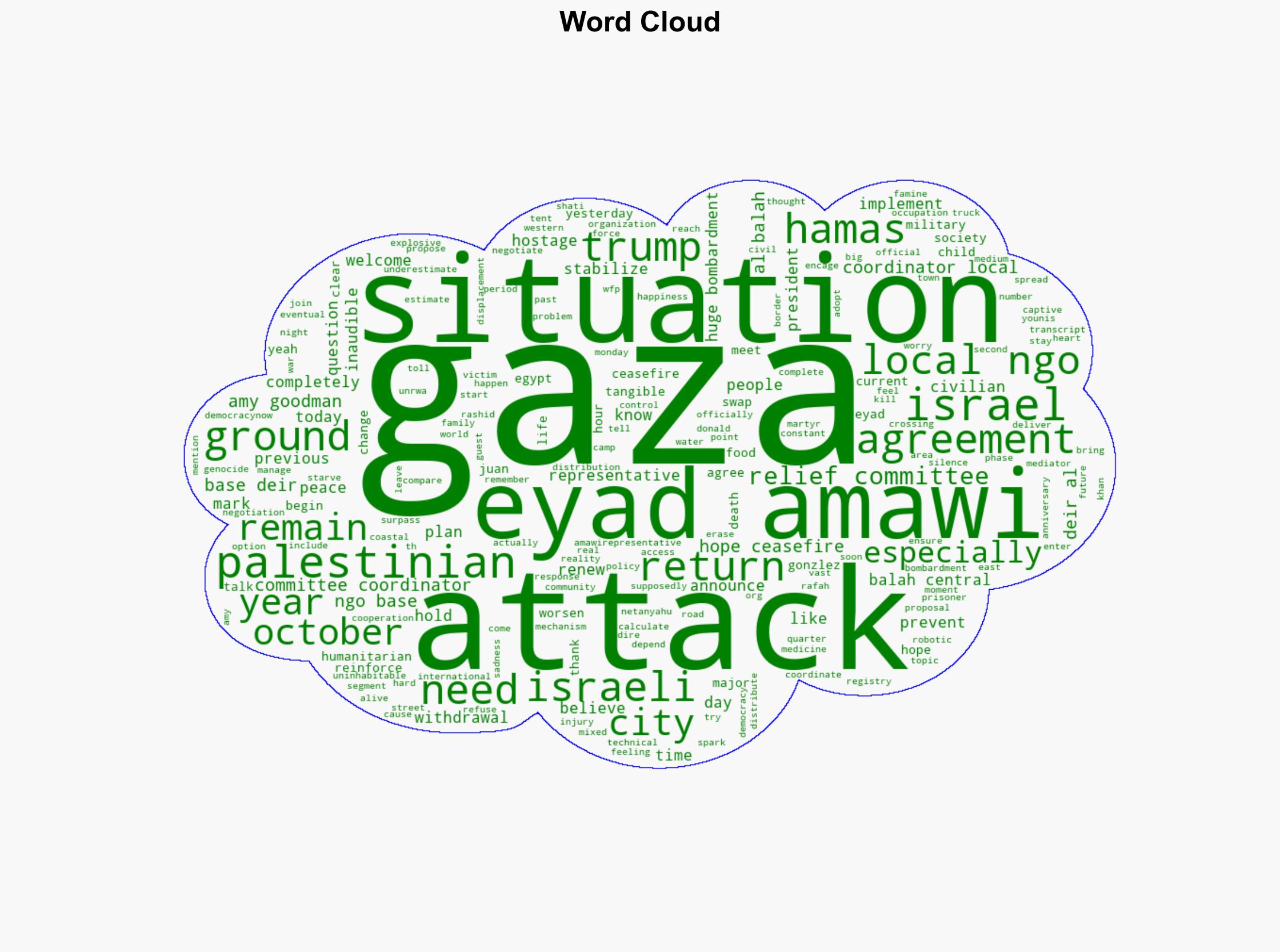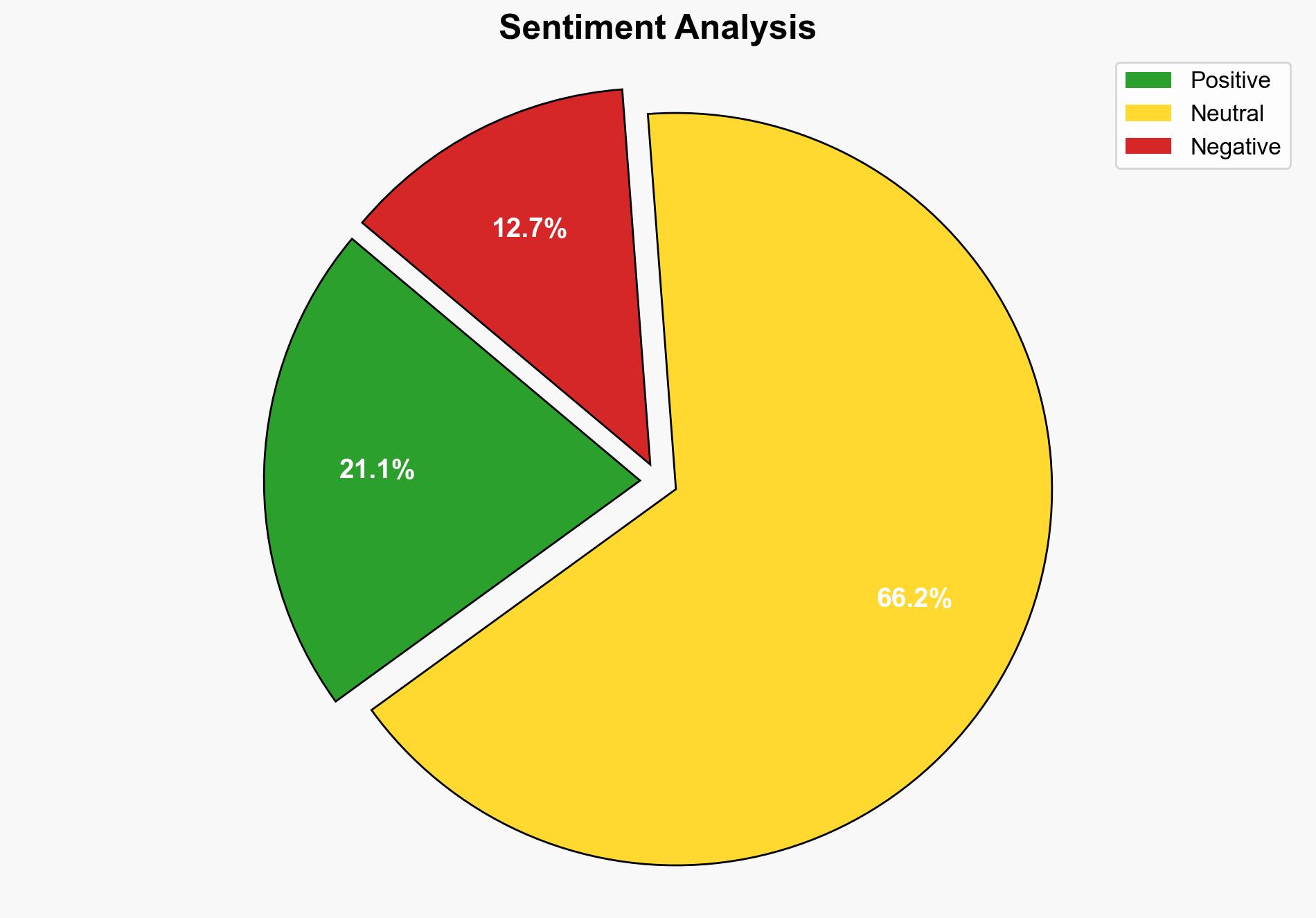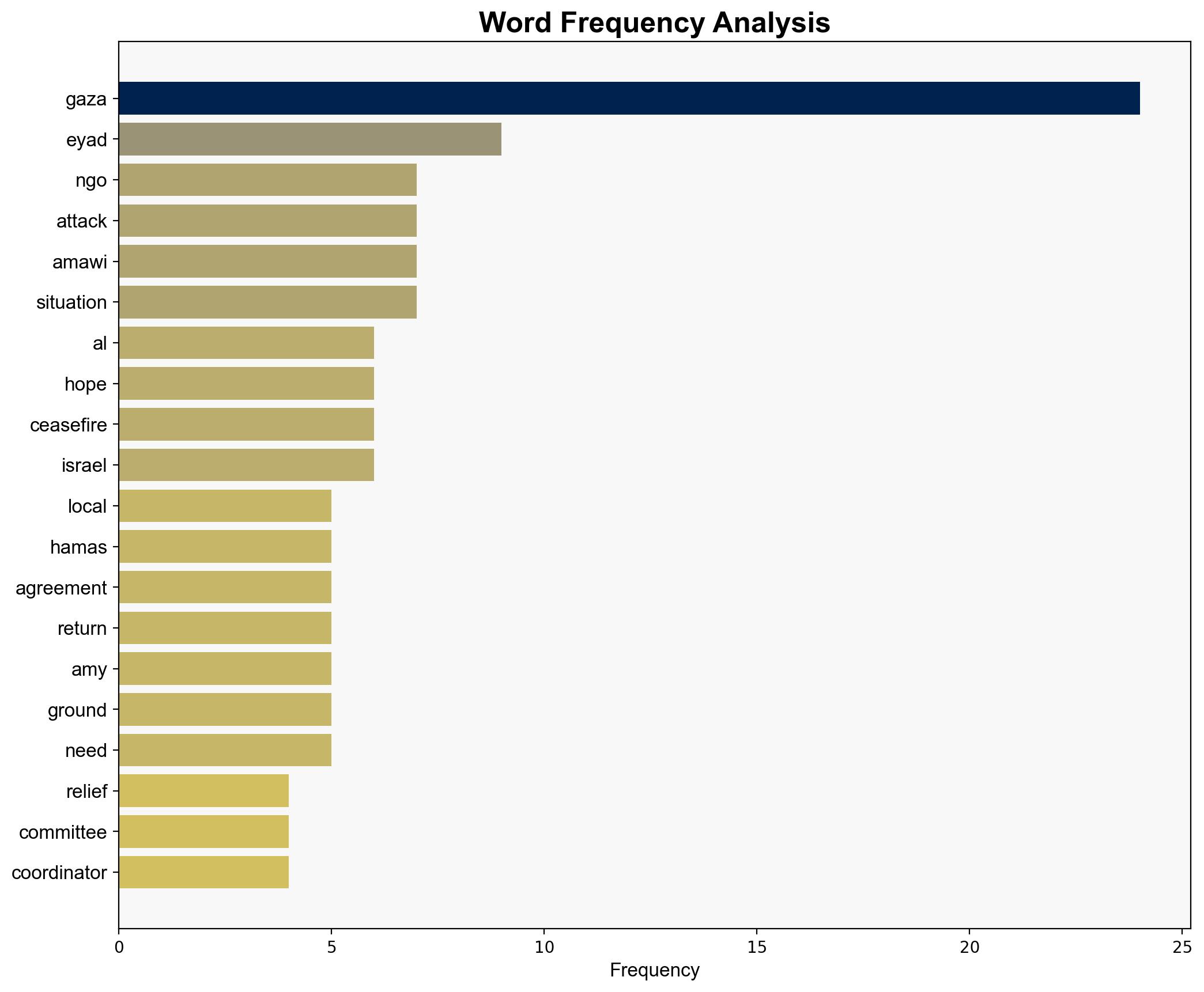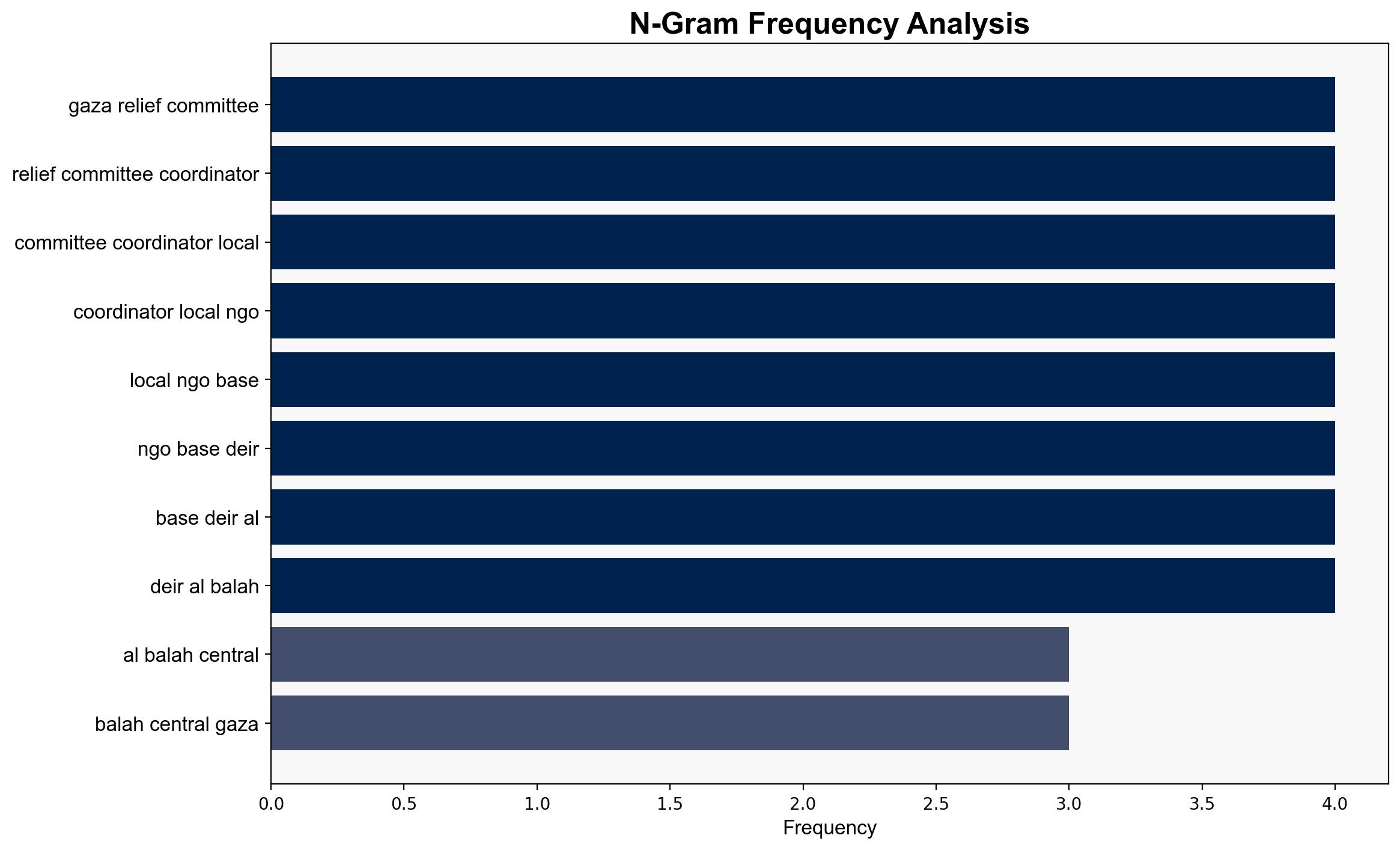Report from Gaza Israeli Bombardment Enters Third Year Despite Ceasefire Talks in Egypt – Democracy Now!
Published on: 2025-10-07
Intelligence Report: Report from Gaza Israeli Bombardment Enters Third Year Despite Ceasefire Talks in Egypt – Democracy Now!
1. BLUF (Bottom Line Up Front)
The most supported hypothesis is that the ongoing Israeli bombardment of Gaza, despite ceasefire talks, is a strategic measure to maintain military pressure on Hamas and leverage negotiations. Confidence level: Moderate. Recommended action: Enhance diplomatic engagement through neutral mediators to facilitate a sustainable ceasefire agreement.
2. Competing Hypotheses
1. **Hypothesis A**: The continued bombardment is a strategic move by Israel to maintain military pressure on Hamas and leverage negotiations in Egypt.
– **Supporting Evidence**: The ongoing military actions coincide with ceasefire talks, suggesting a tactic to strengthen Israel’s negotiating position.
– **SAT Applied**: Cross-Impact Simulation indicates that military pressure could influence negotiation outcomes favorably for Israel.
2. **Hypothesis B**: The bombardment reflects a breakdown in communication and trust between the parties, leading to unilateral actions despite negotiations.
– **Supporting Evidence**: Reports of continued attacks and humanitarian crises suggest a lack of effective communication and trust-building measures.
– **SAT Applied**: ACH 2.0 shows that without trust, ceasefire agreements are less likely to be implemented successfully.
3. Key Assumptions and Red Flags
– **Assumptions**: Both hypotheses assume that Israel’s actions are directly linked to negotiation strategies or communication failures.
– **Red Flags**: The lack of detailed information on the negotiation progress and the humanitarian impact raises questions about the transparency and intentions of both parties.
– **Blind Spots**: Potential external influences on the negotiations, such as international diplomatic pressures, are not fully explored.
4. Implications and Strategic Risks
– **Patterns**: Continued military actions amidst negotiations suggest a pattern of using force as leverage.
– **Cascading Threats**: Prolonged conflict could lead to regional instability and increased humanitarian crises.
– **Potential Escalation**: Failure to reach a ceasefire could escalate into broader regional conflicts, drawing in neighboring countries and international actors.
5. Recommendations and Outlook
- Enhance diplomatic efforts through neutral third-party mediators to facilitate trust-building and transparent negotiations.
- Scenario Projections:
– **Best Case**: Successful ceasefire agreement leading to a phased military withdrawal and humanitarian relief.
– **Worst Case**: Escalation of conflict resulting in regional instability and increased civilian casualties.
– **Most Likely**: Prolonged negotiations with intermittent military actions, maintaining the status quo.
6. Key Individuals and Entities
– Eyad Amawi
– President Donald Trump
– Amy Goodman
– Juan González
7. Thematic Tags
national security threats, regional focus, humanitarian crisis, conflict resolution





